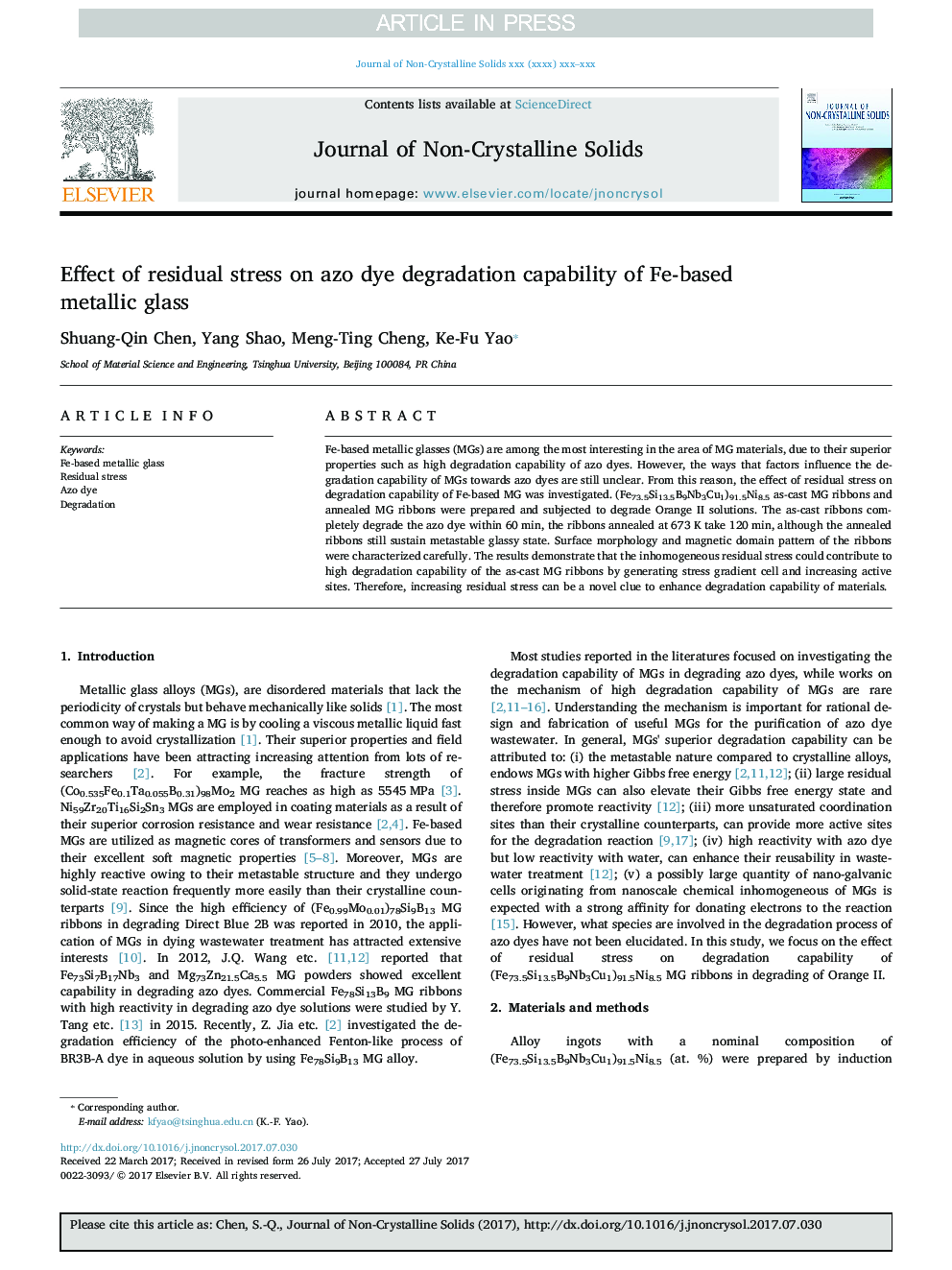| Article ID | Journal | Published Year | Pages | File Type |
|---|---|---|---|---|
| 5441152 | Journal of Non-Crystalline Solids | 2017 | 5 Pages |
Abstract
Fe-based metallic glasses (MGs) are among the most interesting in the area of MG materials, due to their superior properties such as high degradation capability of azo dyes. However, the ways that factors influence the degradation capability of MGs towards azo dyes are still unclear. From this reason, the effect of residual stress on degradation capability of Fe-based MG was investigated. (Fe73.5Si13.5B9Nb3Cu1)91.5Ni8.5 as-cast MG ribbons and annealed MG ribbons were prepared and subjected to degrade Orange II solutions. The as-cast ribbons completely degrade the azo dye within 60Â min, the ribbons annealed at 673Â K take 120Â min, although the annealed ribbons still sustain metastable glassy state. Surface morphology and magnetic domain pattern of the ribbons were characterized carefully. The results demonstrate that the inhomogeneous residual stress could contribute to high degradation capability of the as-cast MG ribbons by generating stress gradient cell and increasing active sites. Therefore, increasing residual stress can be a novel clue to enhance degradation capability of materials.
Related Topics
Physical Sciences and Engineering
Materials Science
Ceramics and Composites
Authors
Shuang-Qin Chen, Yang Shao, Meng-Ting Cheng, Ke-Fu Yao,
